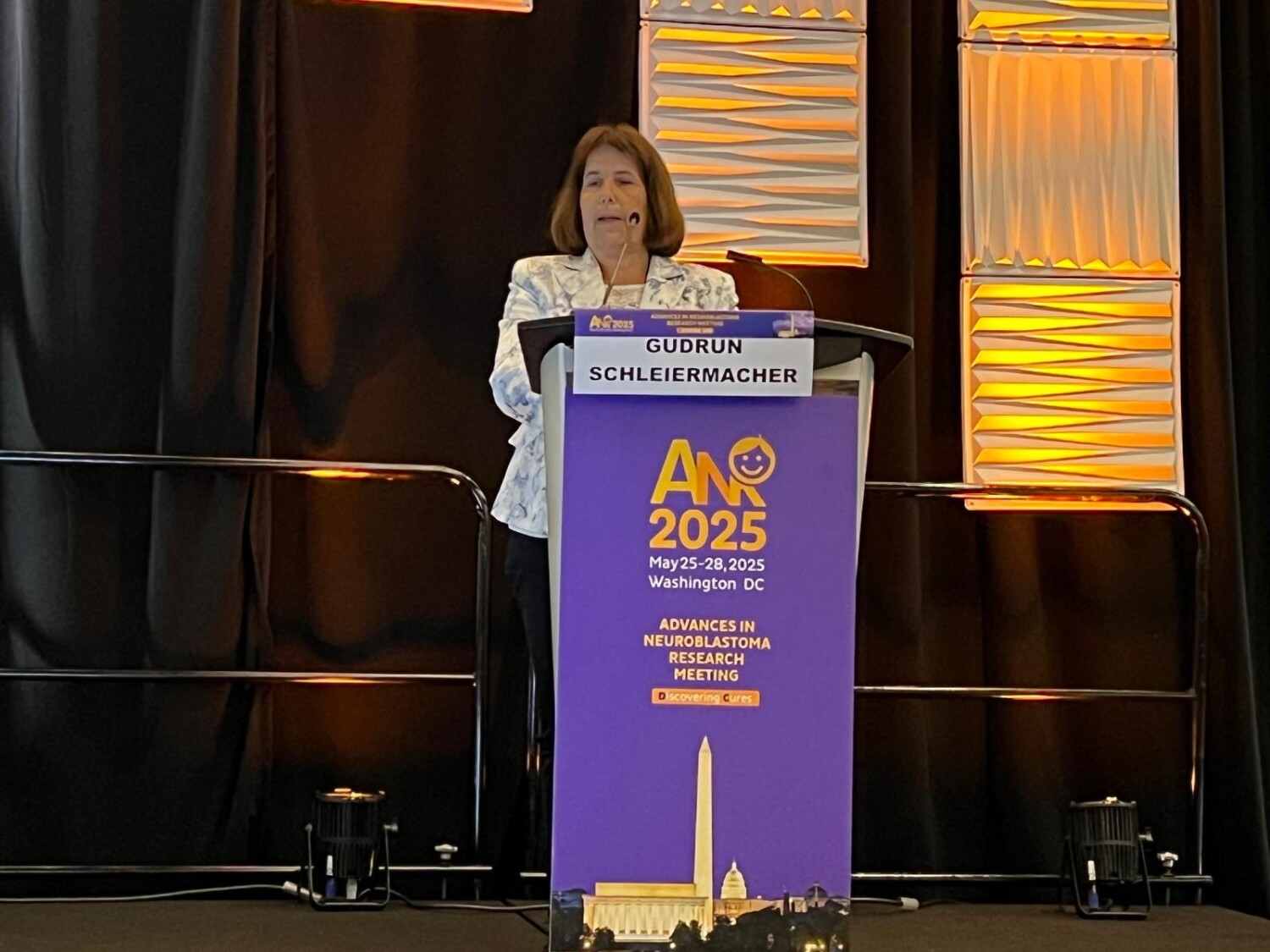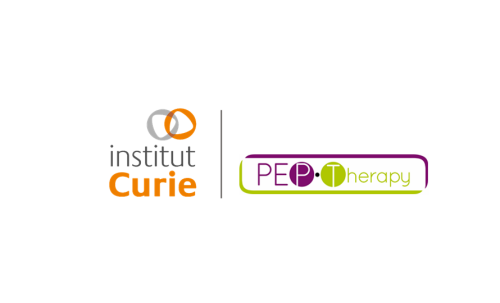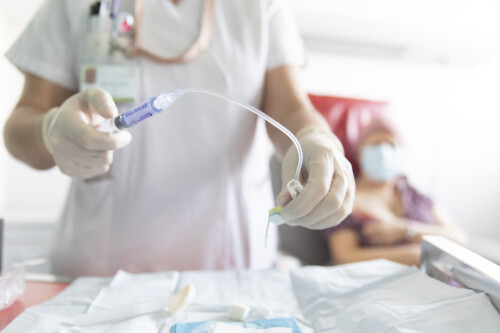"Neuroblastoma is a pediatric cancer that continues to lack effective therapeutic solutions, which is why today we are pleased to present the many clinical, translational and fundamental studies from Institut Curie laboratories that are bringing new strategies to the fight against these rare cancers," says Dr. Gudrun Schleiermacher, pediatrician and deputy director of translational research at Institut Curie's SIREDO[1] center. "In addition to federating research and care teams, the strength of Institut Curie lies in promoting large-scale studies on a European and international scale for these pediatric cancers, which require coordination on this scale. And it is precisely this synergy that drives us to accelerate discoveries to change the way our young patients are cared for."
Neuroblastoma is a pediatric cancer that originates from embryonic cells called neuroblasts, which, during development. Instead of developing into neurons, these neuroblasts proliferate abnormally, forming a tumor. Neuroblastoma mainly affects children under the age of five, and can develop in the abdomen, particularly from the adrenal glands, but also from sympathetic ganglia located along the spinal column, from the neck to the pelvis. Its evolution varies greatly from case to case: some forms may regress spontaneously, while others, known as "high-risk", are highly aggressive and require new therapeutic solutions. Together, the teams at Institut Curie's SIREDO center are working to gain a better understanding of the mechanisms at play in the disease, explore its various stages of development and adapt therapeutic strategies.
Low-risk neuroblastoma: results of the large SIOPEN LINES clinical trial transform the management of children
Dr. Gudrun Schleiermacher is coordinating the clinical part and biological analyses of the SIOPEN-LINES (Low and Intermediate Risk Neuroblastoma European Study)[2] clinical trial and will be presenting several analyses from this study at the ANR 2025 congress. The result of more than 10 years' work, the SIOPEN-LINES study involved nearly 20 European laboratories, with the aim of developing new therapeutic strategies for low-risk neuroblastoma. Data from this study have already changed the way neuroblastoma patients are managed, in particular by reducing the intensity of treatment for infants with favorable forms, and will continue to do so in the years to come.
- One of these analyses proposes to adapt treatment according to the genomic profile of low- or intermediate-risk neuroblastoma patients, in addition to clinical information. These results will make it possible to adjust the therapeutic strategy for newly diagnosed patients, to avoid treatment overload.
- Based on the analysis of over 1,000 tumor samples, the researchers categorized patients according to their genomic profile. In particular, they explored genomic profiles already described in work carried out at Institut Curie, in order to differentiate them according to their association with a specific prognosis.
- A separate analysis focused on a very rare syndrome, opsoclonus-myoclonus-ataxia syndrome (OMAS), associated in 50% of cases with neuroblastoma. The world's first study on this scale, it was promoted by Institut Curie and included almost 100 OMAS patients. It assessed the efficacy of immunosuppressive treatments on disease remission.
High-risk neuroblastoma: leads to prevent relapse through analysis of circulating biomarkers
The results of MICCHADO (Molecular and Immunological Characterisation of high risk CHildhood cancer At DiagnOsis), a national study set up by Institut Curie, will be presented. The aim is to establish a molecular and immunological characterization of high-risk neuroblastoma, in order to identify biomarkers correlated with relapse. The study involved 190 patients. Researchers analyzed several types of biomarkers, such as circulating DNA levels and alterations, as well as immune cell populations. They observed higher levels of circulating free DNA (cfDNA) and circulating tumor DNA (ctDNA) in high-risk neuroblastoma patients, compared to those with low-risk forms. The analyses also revealed specific alterations in circulating DNA at the time of relapse, confirming the value of this approach in patient follow-up.
As part of a vast European collaboration, the analysis of over 700 tumor samples from children with high-risk neuroblastoma has made it possible to define the frequency of so-called "targetable" genetic alterations. In addition, drug screening analyses have enabled us to explore our knowledge of resistance mechanisms following targeted therapies like lorlatinib, a treatment proposed in cases of ALK genetic alteration.
Other work presented builds on the BEACON study, which aims to better understand the biological mechanisms involved in relapse in high-risk neuroblastoma patients. Certain alterations identified in circulating tumor DNA at the time of relapse are correlated with poorer survival. These data suggest that plasma analysis, performed throughout follow-up, could become a useful indicator of patients' clinical evolution.
A step closer to understanding the development of neuroblastoma
Fundamental research at Institut Curie, notably by the Neuroblastoma Biology and Oncogenesis team headed by Dr Isabelle Janoueix-Lerosey, focuses on understanding the mechanisms involved in the development of neuroblastoma.
"Understanding the causes and, above all, the early stages in the development of neuroblastoma is essential if we are to pinpoint the origin of this cancer. It is by deciphering these mechanisms that we will eventually be able to devise new therapies to prevent progression and improve care for young patients." Dr. Isabelle Janoueix-Lerosey, Director of Research at Inserm and head of the "Biology and oncogenesis of neuroblastoma" team at Institut Curie.
At the ANR 2025 congress, several studies will be presented by Institut Curie teams:
- A first study examined the role of the MYCN and ALK oncogenes in the early stages of tumor development. The results show that these two oncogenes disrupt sympathetic nervous system development in different ways and cooperate in malignant transformation. This work contributes to a better understanding of the heterogeneity of neuroblastoma depending on tumor location and origin (adrenal gland versus sympathetic ganglia).
- Cellular plasticity has been the subject of a study highlighting the central role of transcriptional coactivators YAP and TAZ using several neuroblastoma cell models. They can activate or enhance the expression of certain genes involved in cell identity change (reprogramming of noradrenergic cells into mesenchymal cells) which become rendering them more invasive and treatment-resistant in vitro. The aim is to better understand the factors involved in these changes of state, which could contribute to the progression of neuroblastoma in children.
- Another project explores the tumor microenvironment. Using multiple immunofluorescence labeling, researchers are mapping the distribution of cell populations within the tumor to identify areas with distinct immune profiles, likely to influence response to immunotherapies.
- Finally, other work focused on understanding the epigenetic mechanisms involved in the development of neuroblastoma, in order to better understand the differences between clinical categories. The researchers identified a repressive epigenetic signature (a set of marks blocking gene expression), involving around 600 genes, common to all patient samples. This discovery provides new insights into the development of neuroblastoma, and explains the variations in disease behavior and aggressiveness in certain cases.
|
On the ANR 2025 agenda:
The SIOPEN LINES clinical trial: >Genomic profiling in low and intermediate risk neuroblastoma to refine treatment stratification and improve patient outcome – LINES: a SIOPEN trial – Parallel Session on May 25 “Landscapes and Profiles (Transl)” >Clinical outcome of patients with opsoclonus-myoclonus-ataxia syndrome (OMAS) treated in the SIOPEN OMS/DES2011 study – Parallel Session on May 26 “Localized and low risk (Clin)” >Clinicobiological therapeutic stratification leads to excellent prognosis in MYCN-NA disseminated NB patients ≤12 m. Results of SIOPEN LINES trial. Results of SIOPEN-LINES trial – Plenary Session on May 26 “Optimizing Clinical Care”
Translational research: Parallel Session on May 26 “Circulating Tumor Material” >Multi-Omics profiling of neuroblastoma identifies immunological biomarkers associated with higher risk of relapse: results from the MICCHADO study >Sequential cell free DNA analysis reveals genetic heterogeneity in patients with relapsed neuroblastoma enrolled in the SIOPEN-ITCC BEACON study >Targetable Genetic Alterations in High-Risk Neuroblastoma Patients Enrolled in the SIOPEN HR-NBL1 Study (Elnaz Saberi-Anseri, Angeli bellini, parallel session) >In vitro and in vivo analyses of resistance mechanisms to treatment combinations with ALK inhibitors in neuroblastoma (Angela Bellini, parallel session)
Basic research: >Neuroblastoma: Insights into neural crest origins and sympathetic nervous system development – Dr Isabelle Janoueix-Lerosey – Education Session on May 27 “Developmental Biology” >Unveiling the role of MYCN and ALK oncogenes in the early stages of neuroblastoma development using genetically engineered mouse models – Dr Nour El Houda Djerir – Plenary Session on May 27 “Plasticity and Evolution” >A new core regulatory circuitry driving a noradrenergic to mesenchymal transition highlights YAP/TAZ as critical players of neuroblastoma plasticity – Dr Cécile Thirant – Rapid Fire Session on May 28 >H3K27me3-mediated epigenetic repression regulates neuroblastoma development and contributes to biological heterogeneity – Charlotte Butterworth – Parallel Session on May 16 and 28 “Epigenetics and Chromatin Targeting (Basic)” >Spatiotemporal characterization of mouse MYCN-driven neuroblastoma using 17-plex immunofluorescence – Eva Galateau – Poster session Find out more about the program: https://anr2025.org/ |
[1] SIREDO center for Care, Innovation & Research in Childhood, Adolescent & Young-Adult Oncology
[2] supported by the International Society of Paediatric Oncology (SIOPEN).



